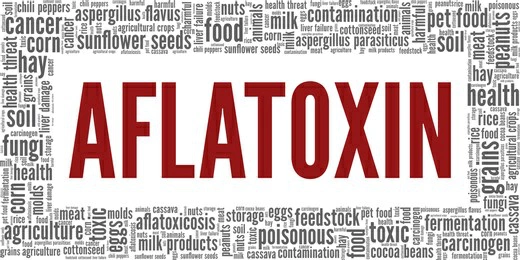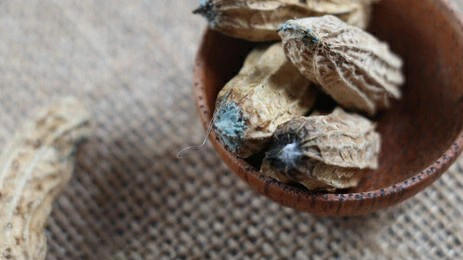Recently, the topic "#SuperCarcinogenAroundUs: Aflatoxin#" topped the trending searches, sparking widespread attention and discussion. Aflatoxin is a potent carcinogen produced by the mold Aspergillus flavus. As early as 1993, the World Health Organization classified aflatoxin as a Group 1 carcinogen, with a toxicity 68 times greater than arsenic and 10 times greater than potassium cyanide, while its carcinogenic potential is 75 times that of dimethylnitrosamine.
So, what is aflatoxin? In which foods is it commonly found, and how can we prevent exposure?
A Closer Look at Aflatoxins: An Undeniable Health Threat
In our daily lives, food safety remains a significant concern. Recently, aflatoxins have sparked widespread discussion regarding their role as carcinogens. What are they? How do they affect our health? And how can we prevent exposure? This article aims to uncover the truth about aflatoxins.
1. What Are Aflatoxins?
Aflatoxins are highly toxic substances produced by the metabolism of mold species such as Aspergillus flavus and Aspergillus parasiticus. Classified as Group 1 carcinogens by the International Agency for Research on Cancer (IARC), over 20 types of aflatoxins are known, with the most common and hazardous being B1, B2, G1, and G2. Aflatoxins are poorly soluble in water but readily dissolve in fats. They are remarkably heat-resistant, remaining intact even after cooking at 100°C for 20 hours. While ultraviolet light and microwaves can partially break down their structure, these methods do not ensure complete removal. Notably, aflatoxin B1 is 68 times more toxic than arsenic, and just 1 milligram can induce cancer, making it one of the most potent carcinogens known.

2. The Toxicity of Aflatoxins
Aflatoxins possess acute and chronic toxicity. Acute poisoning can lead to symptoms such as fever, vomiting, and loss of appetite, with severe cases resulting in ascites, hepatosplenomegaly, liver cirrhosis, and even death. Chronic exposure manifests through growth disorders, liver damage, and reduced liver function, which may cause weight loss and infertility.
Alarmingly, the carcinogenic potential of aflatoxins is extremely high; ingesting just 1 milligram can potentially lead to cancer, while a single dose of 20 milligrams can be fatal. Aflatoxins have a 75-fold greater ability to induce liver cancer compared to other carcinogens, making them one of the most formidable chemical carcinogens recognized globally.

3. Where Do Aflatoxins Lurk in Food?
Certain foods are particularly susceptible to aflatoxin contamination. Here are some common "hiding places":

- Moldy Peanuts and Corn: High-starch foods like peanuts and corn are prone to mold growth in humid conditions.
- Unregulated Peanut Oil: Oils produced in unlicensed facilities may contain moldy peanuts that are not adequately filtered.
- Over-soaked Mushrooms: Soaking mushrooms for too long can encourage bacterial growth and aflatoxin development; it’s best to soak only what you need.
- Spoiled Rice: Aflatoxins tend to accumulate on the surface of rice grains. Washing the rice thoroughly can remove up to 80% of toxins.
- Bitter Nuts: If you taste bitterness in nuts like sunflower seeds, walnuts, or pistachios, discard them immediately as this is often a sign of mold.
- Dairy Products: Aflatoxins can enter dairy through feed made from moldy grains, transferring to milk.
- Spices: Dried spices such as chili peppers and star anise can develop aflatoxins if they become moldy.
- Unwashed Utensils: Wooden utensils can harbor food residues that allow mold growth; regular cleaning and replacement are crucial.
4. How to Prevent Aflatoxin Contamination?
To safeguard your health, here are some preventive measures:
- Buy from Reputable Sources: Choose products that clearly state the manufacturer, production date, and food safety certification. Inspect for signs of mold or unusual odors.
- Store Properly: Keep food in cool, dry, and well-ventilated areas to prevent moisture buildup.
- Thoroughly Wash Food: Always wash grains and products like rice and corn adequately to remove surface contaminants.
- Regular Cleaning: Maintain a clean kitchen by separating raw and cooked utensils, washing them promptly, and ensuring they dry completely.
Conclusion
Aflatoxins represent a serious and often overlooked health threat in our daily lives. By understanding their nature, recognizing potential sources of risk, and implementing effective prevention strategies, we can protect ourselves and our families. Let’s prioritize food safety and work together to create a safer dietary environment for everyone.
(Images from the internet)






